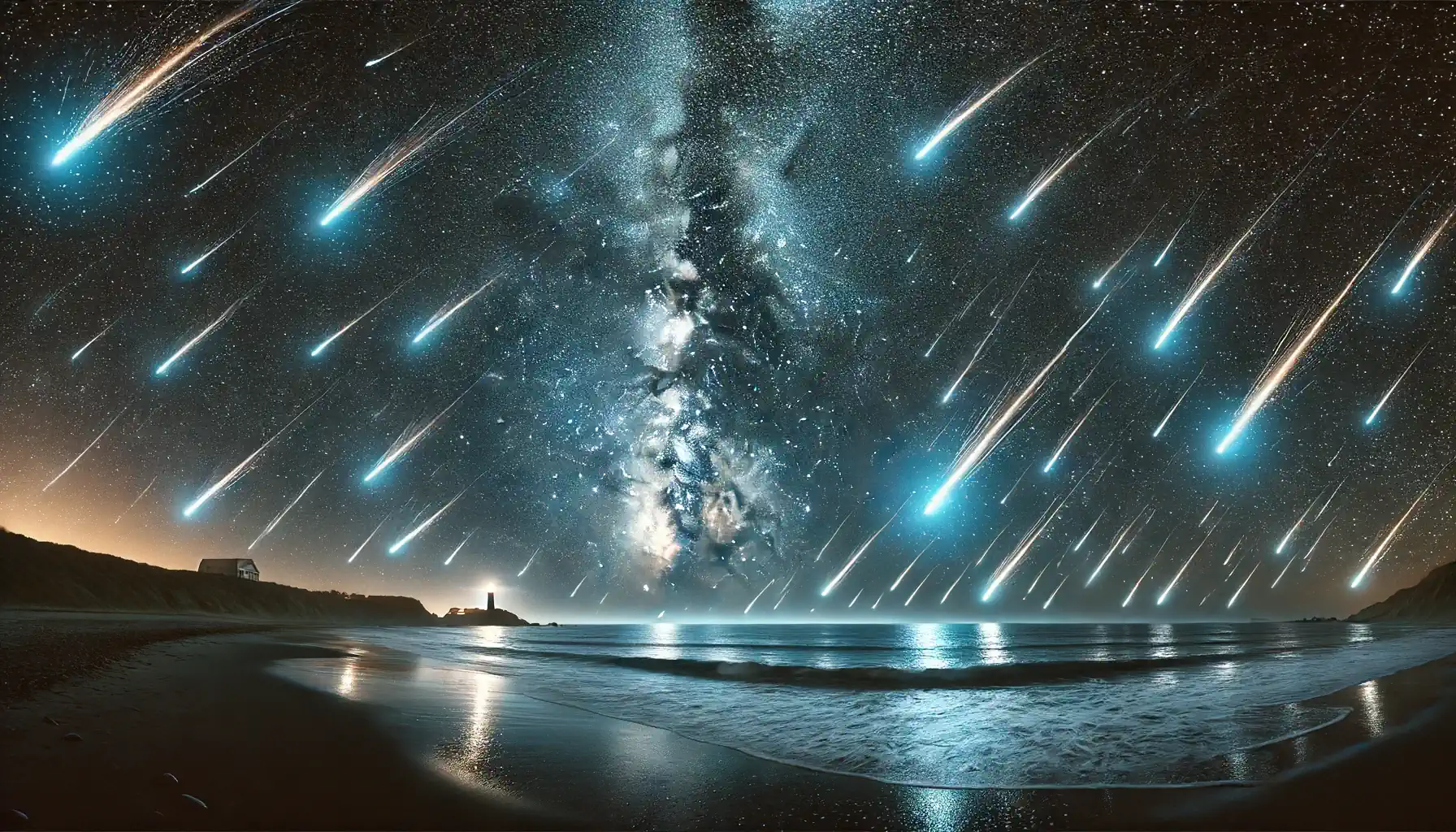
Best viewed: 29-30 July 2023
The Alpha Capricornids don’t produce many meteors but they’re well known for producing spectacular fireballs!
What is the Alpha Capricornid meteor shower?
The Alpha Capricornid meteor shower occurs when Earth passes through debris left by comet 169P/NEAT. This interaction happens annually, producing the Alpha Capricornids as the debris burns up in our atmosphere.
Meteor Rate: At its peak, the Alpha Capricornids produce about 5 meteors per hour. Despite the low frequency, these meteors are often very bright and can become fireballs.
Best Viewing Time in 2023
- Optimal Time: Early hours of Sunday, 30th July, before dawn.
- Challenges: A full moon around the same time may result in poor viewing conditions. Clear, dark skies are ideal.
The Alpha Capricornids are visible from 3rd July to 15th August, with peak activity on 30th July.
Viewing Tips from the UK
You don’t need special equipment to see the Alpha Capricornid meteor shower from the UK, but some preparation enhances the experience.
- Check the Weather: Monitor the forecast. If it’s cloudy, consider watching on the days leading up to the peak.
- Find a Dark Spot: Choose a dark, safe location with a clear view, away from buildings, trees, and lights. The Alpha Capricornids can appear anywhere in the sky, so a wide view is beneficial.
- Adjust Your Eyes: Turn off all lights, including phones and torches, for 15 minutes to let your eyes adapt to the darkness. If using a torch, opt for one with a red filter.
- Stay Comfortable: Dress warmly and bring a reclining chair. Refreshments can make the experience more enjoyable.
With these tips, you’ll be well-prepared to enjoy the spectacle of the Alpha Capricornid meteor shower.
If you are planning to take pictures of meteors, Mary McIntyre has some very useful tips for you on how to take better meteor pictures.
Another great way to watch the Lyrids is to buy or build yourself a meteor camera. You’ll be able to create amazing time lapse videos like the one below and join the UK network of 200+ meteor cameras. You don’t need any previous experience and it’s a great project to do with your kids or students!
Fun facts about the Alpha Capricornid meteor shower
- They’re called the Alpha Capricornids because the meteors seem to come from the constellation of Capricorn. However, they’re actually caused by the Earth crashing into debris left behind by the comet 169P/NEAT.
- Astronomers estimate that the meteor shower was created about 3,500 to 5,000 years ago, when half of the comet disintegrated into dust.
- Most of this dust will not be in Earth’s path until the 24th century, when the Alpha Capricornids are expected to become an annual meteor shower stronger than any current meteor shower.